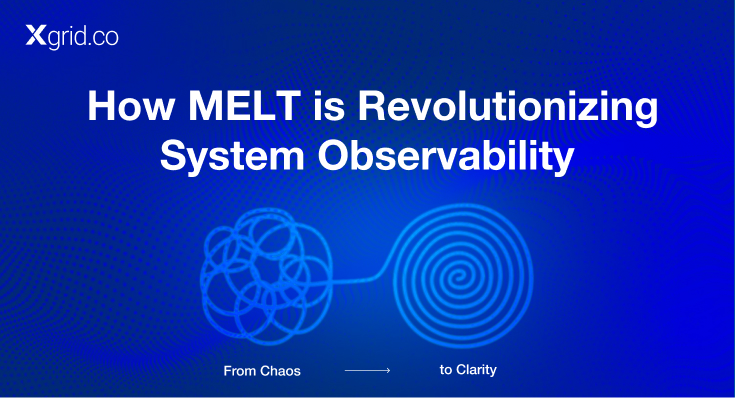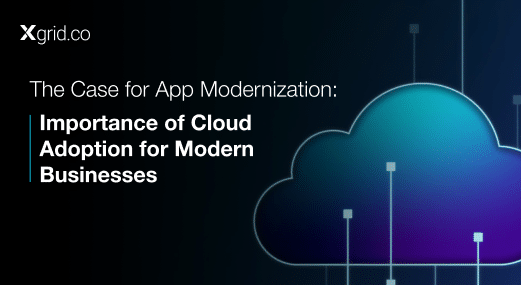Mastering Proactive Incident Detection with a Killer Monitoring Strategy
A proactive monitoring strategy is the secret sauce that ensures smooth operations and prevents potential catastrophes. Buckle up as we guide you through building a bulletproof monitoring strategy for proactive incident detection, with real-world examples that’ll make you a monitoring maestro.
Why Proactive Monitoring is a Game-Changer?
Traditional reactive monitoring is like playing a dangerous game of whack-a-mole – you’re always a step behind, and the consequences can be severe:
- Extended Downtime: By the time you identify a problem, valuable time and resources might have already gone down the drain.
- Data Disasters: Critical data breaches can occur before you even realize something’s amiss.
- Customer Churn: Downtime and outages can severely impact customer experience, leading to frustration and potential loss of business.
Downloads
Article (PDF-276 KB)MOST POPULAR INSIGHTS
- How MELT is Revolutionizing System Observability
- MELT: Transforming System Observability for Proactive IT Excellence
- The Case for App Modernization: Importance of Cloud Adoption for Modern Businesses
- Aligning Cloud Cost Usage with Business KPIs Through Effective Modeling
- Determine Your Cloud Cost Footprint Accurately Before It’s Deployed
Proactive monitoring, on the other hand, is like having a crystal ball – you can identify and address potential issues before they escalate into major incidents. This opens up a world of benefits:
- Early Detection and Prevention: You can nip problems in the bud before they cause significant damage, like a master gardener pruning away potential threats.
- Lightning-Fast Resolution: By identifying issues early, you can resolve them quicker, minimizing downtime and keeping your systems humming like a finely tuned engine.
- Reduced Impact: Proactive measures can help mitigate the impact of incidents, protecting your data, reputation, and customer trust like a virtual fortress.
Building Your Monitoring Masterpiece
Here are the key steps to crafting a monitoring strategy that will make your systems sing:
- Identify Your Monitoring Targets: This depends on your specific needs, but common areas include:
- System Health: Monitor server performance metrics like CPU usage, memory, and disk space – the vital signs of your digital infrastructure.
- Application Performance: Track application response times, error rates, and resource usage to ensure your apps are firing on all cylinders.
- Network Performance: Monitor bandwidth utilization, latency, and packet loss to keep your data highways clear and free-flowing.
- Security: Keep a watchful eye on security logs for suspicious activity, login attempts, and potential vulnerabilities – your digital bodyguards.
- Define Thresholds and Alerts: Set thresholds for key metrics that act as early warning systems. When a threshold is breached, an alert is triggered, notifying you of a potential issue before it becomes a full-blown crisis.
Real-life Example 1: Proactive Server Monitoring Masterclass
Imagine you’re running an e-commerce empire. A key metric to monitor is server CPU usage. You can set a threshold that triggers an alert if CPU usage exceeds 80% for a sustained period. This could indicate an impending server overload, allowing you to scale resources or investigate the cause before your website crashes during the busiest shopping season, protecting your revenue and reputation. Leveraging SRE (Site Reliability Engineering) services can further enhance your ability to preemptively address these issues, ensuring optimal performance and reliability.
- Choose the Right Tools: There are numerous monitoring tools out there, each with its own unique set of features and pricing structures. Select tools that cater to your specific needs and budget, like a master craftsman carefully choosing the right tools for the job.
- Establish Clear Escalation Procedures: Define a clear process for handling alerts that ensures swift and effective response. This includes assigning responsibility, prioritizing issues, and taking corrective actions with military precision.
Real-life Example 2: Multi-Tiered Alerting Mastery
Let’s say you have a complex application with a web server, database server, and application server – a digital symphony that requires careful orchestration. You can set up tiered alerting, where an initial alert goes to the network operations team if the web server becomes unresponsive. If the issue persists and points to the database server, a higher-priority alert is sent to the database team. This ensures the right people are notified promptly based on the severity of the issue, like a well-drilled emergency response team.
- Continuously Monitor and Optimize: Monitoring is an ongoing journey, not a destination. Regularly review your strategy, analyze alerts, and fine-tune thresholds and escalation procedures to optimize effectiveness. Think of it as continuously polishing a diamond – the more you refine, the brighter it shines.
Conclusion
By implementing a robust monitoring strategy, you can transition from reactive firefighting to proactive incident prevention, ensuring your systems run like a well-oiled machine. This not only ensures smooth operations but also safeguards your data, reputation, and customer trust – the holy trifecta of digital success. Remember, effective monitoring is an ever-evolving art form, requiring continuous adaptation and improvement as your systems and needs evolve. Embrace the journey, and you’ll be a monitoring master in no time.
About The Author(s)
Muhammad Saad – Senior Software Systems & DevOps Engineer | Team SRE
He leverages his expertise in cloud computing and DevOps to deliver cost-effective and reliable solutions for demanding businesses. He led the development of the open-source cloud cost control product XC3, which reduced costs by 30% through cloud resource monitoring and alerting, and improved performance with automation and visualization. His core competencies include Site Reliability Engineering (SRE), Automation, Containerization, CI/CD, Infrastructure as Code, and Security. His goal is to optimize infrastructures and boost efficiency.

Established in 2012, Xgrid has a history of delivering a wide range of intelligent and secure cloud infrastructure, user interface and user experience solutions. Our strength lies in our team and its ability to deliver end-to-end solutions using cutting edge technologies.
OFFICE ADDRESS
US Address:
Plug and Play Tech Center, 440 N Wolfe Rd, Sunnyvale, CA 94085
Pakistan Address:
Xgrid Solutions (Private) Limited, Bldg 96, GCC-11, Civic Center, Gulberg Greens, Islamabad
Xgrid Solutions (Pvt) Ltd, Daftarkhwan (One), Building #254/1, Sector G, Phase 5, DHA, Lahore




